In computing, encountering unknown processes or file names is quite a regular occurrence that can lead to certain apprehensions for users. Kernel32.dll is one such file that commonly confuses. In this comprehensive guide, we will explore the essence of Kernel32.dll, its functional role in your computer system, and the potential necessity of its removal.
What is Kernel32.dll?
Kernel32.dll is a Windows operating system’s dynamic link library (DLL) file. It is a core component of the Windows API (Application Programming Interface) and provides a wide range of functions and resources related to system operations and low-level services.
Kernel32.dll is responsible for essential system operations such as memory management, process and thread creation, file, and input/output operations, error handling, synchronization, and exception handling. It provides functions for managing system resources, interacting with hardware devices, and handling various system events.
Some common tasks performed using Kernel32.dll include allocating and freeing memory, creating and terminating processes and threads, managing files and directories, performing input/output operations, handling exceptions and errors, managing system time and date, and interacting with hardware devices such as printers and disk drives.
Kernel32.dll bridges applications and the Windows operating system, allowing software developers to access and utilize system-level functionality. It is loaded into memory when Windows starts up and plays a critical role in the operation of the operating system.
Is Kernel32.dll malware?
No, Kernel32.dll itself is not malware. It is a legitimate system file that is an essential component of the Windows operating system. Kernel32.dll provides a range of functions and resources related to system operations and low-level services.
However, it is important to note that malware can sometimes use names similar to legitimate system files to disguise themselves and evade detection. In rare cases, malware may attempt to replace or modify the genuine Kernel32.dll file with a malicious version.
How to remove Kernel32.dll?
Generally speaking, it’s not necessary to delete Kernel32.dll from your system. It is a crucial part of particular software, and its removal could disrupt its licensing and activation procedures.
Nonetheless, adopting some protective measures is recommended if you observe any strange activities or have reasons to believe that the file might have been tampered with. Here are a few actions you could consider:
- Employ a trustworthy security application like Malwarebytes to scan your system for potential threats like viruses and malware.
- Ensure your software is updated to the most recent version. Kernel32.dll regularly issues updates to mend security loopholes and enhance software performance.
- If you continue to doubt the authenticity of Kernel32.dll, don’t hesitate to contact their customer support. They are equipped to provide necessary guidance and help authenticate the file’s integrity.
Bear in mind that any alteration or deletion of key system files could yield undesired outcomes and potentially hinder the operation of your software. As such, it’s crucial to proceed with caution and seek expert advice if you find yourself in a state of uncertainty.
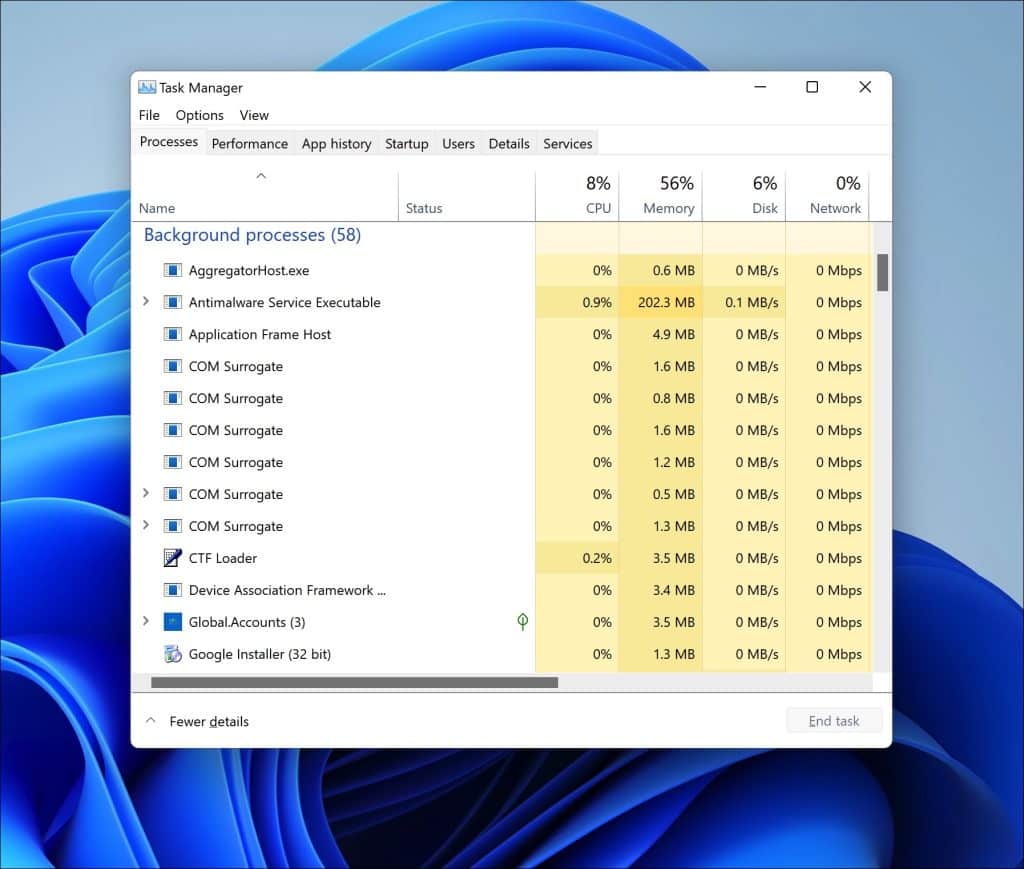
What are common issues with Kernel32.dll?
Kernel32.dll is generally a stable Windows software component, but like any program, it can occasionally encounter issues. Some of the common issues users might experience with Kernel32.dll include:
Kernel32.dll High CPU Usage
This file might sometimes use unusually high CPU resources, which could slow down your system. This might be due to outdated software or temporary glitches in the system.
Kernel32.dll Error Messages
Users might encounter error messages related to Kernel32.dll, resulting from issues with the software, connectivity problems, or even outdated software.
Kernel32.dll potential security threats
In some rare instances, malware or viruses may disguise themselves as Kernel32.dll. If the file is located outside the regular folder or exhibits suspicious behavior, it might be a security threat.
Kernel32.dll Conflicts
Conflicts with other software or system processes could sometimes cause issues with Kernel32.dll, leading to system instability or crashes.
What if I do not trust Kernel32.dll?
Suppose you do not trust Kernel32.dll. Try to scan your computer for any potential malware that might have been installed without your consent.
Malwarebytes anti-malware is an essential tool in the fight against malware. Malwarebytes can remove many types of potential Kernel32.dll malware that other software does often miss. Malwarebytes is costing you absolutely nothing. When cleaning up an infected computer, Malwarebytes has always been free, and I recommend it as an essential tool in the battle against malware.
Install Malwarebytes, and follow the on-screen instructions.
Click Scan to start a malware scan.
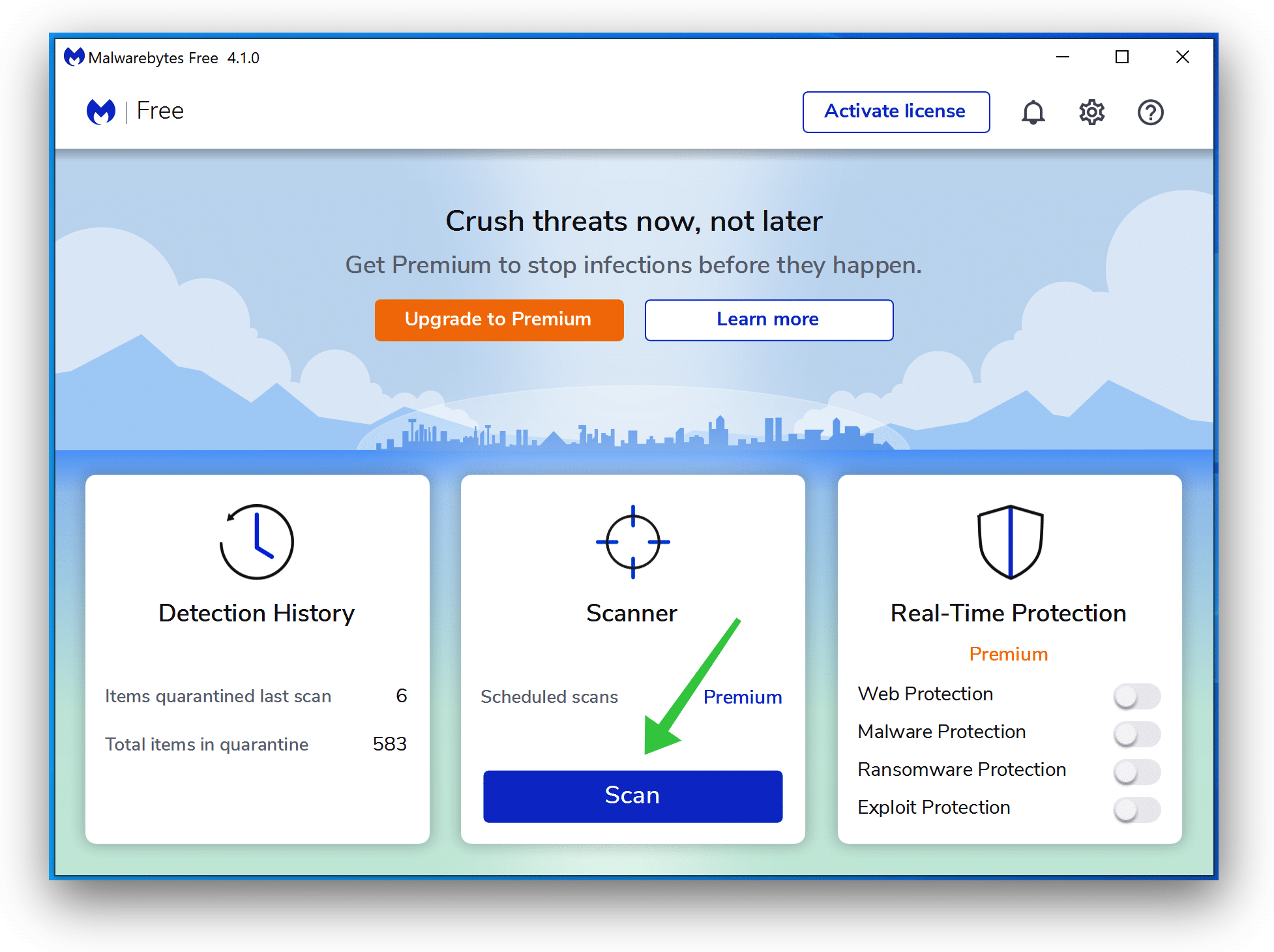
Wait for the Malwarebytes scan to finish. Once completed, review the Kernel32.dll detections.
Click Quarantine to continue.
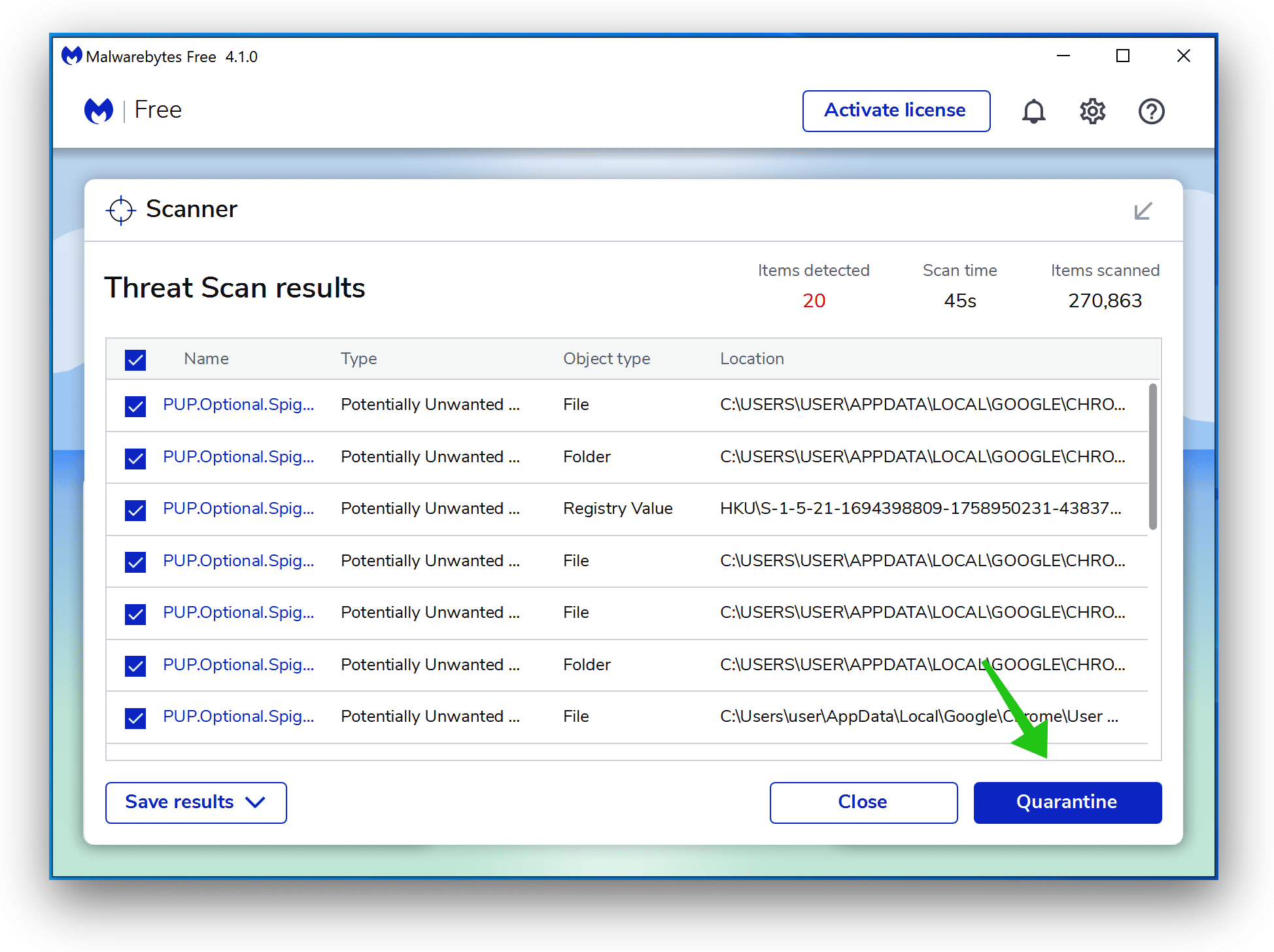
Reboot Windows after all the adware detections are moved to quarantine.
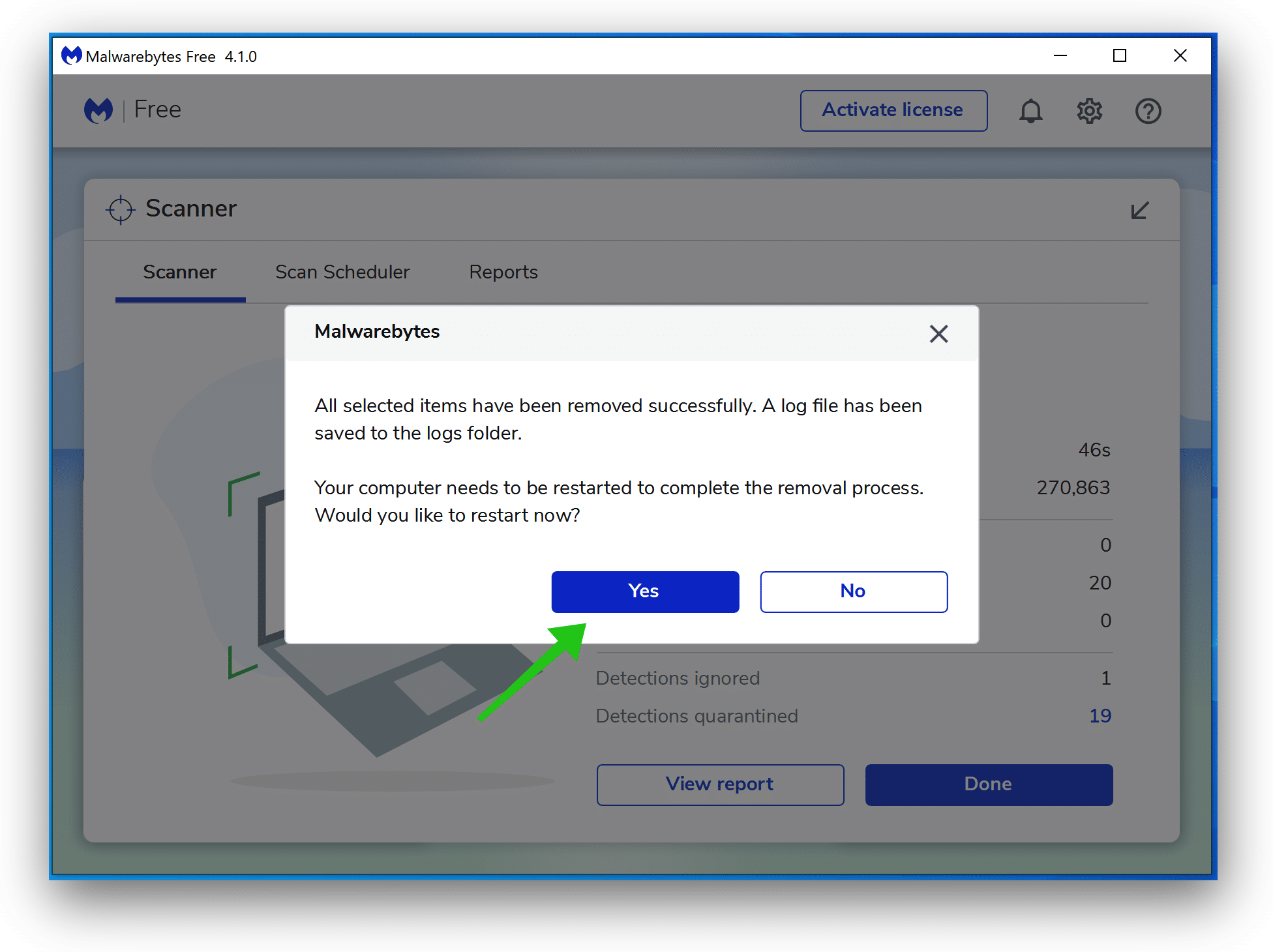
Continue to the next step.
In this second malware removal step, we will start a second scan to ensure no malware remnants are left on your computer. HitmanPRO is a cloud scanner that scans every active file for malicious activity on your computer and sends it to the Sophos cloud for detection. In the Sophos cloud, both Bitdefender antivirus and Kaspersky antivirus scan the file for malicious activities.
When you have downloaded, HitmanPRO, install the HitmanPro 32-bit or HitmanPRO x64. Downloads are saved to the Downloads folder on your computer.
Open HitmanPRO to start the installation and scan.

Accept the Sophos HitmanPRO license agreement to continue. Read the license agreement, check the box, and click on Next.
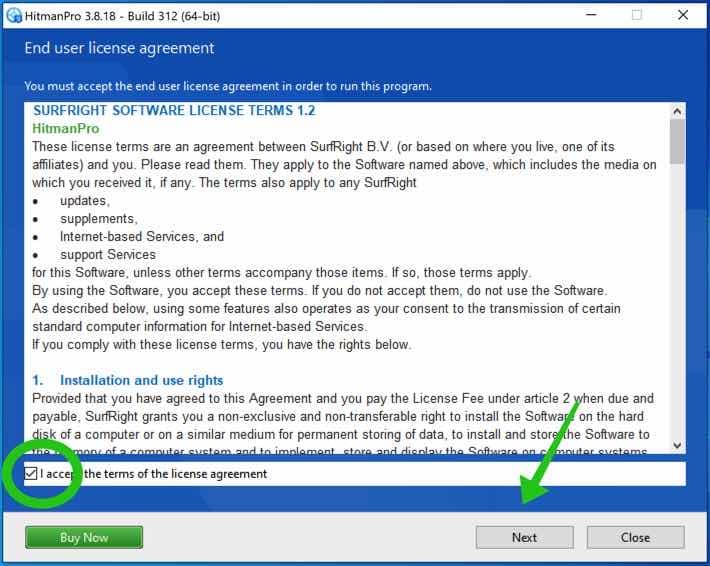
Click the Next button to continue Sophos HitmanPRO installation. Make sure to create a copy of HitmanPRO for regular scans.
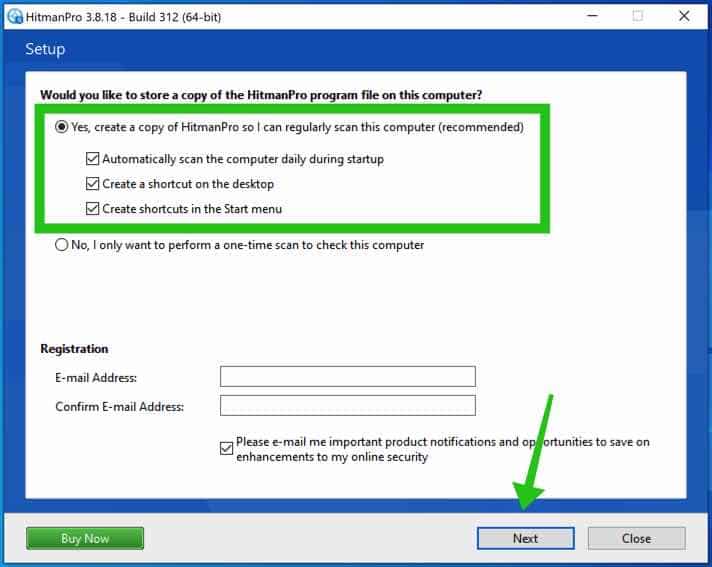
HitmanPRO begins with a scan. Wait for the antivirus scan results.
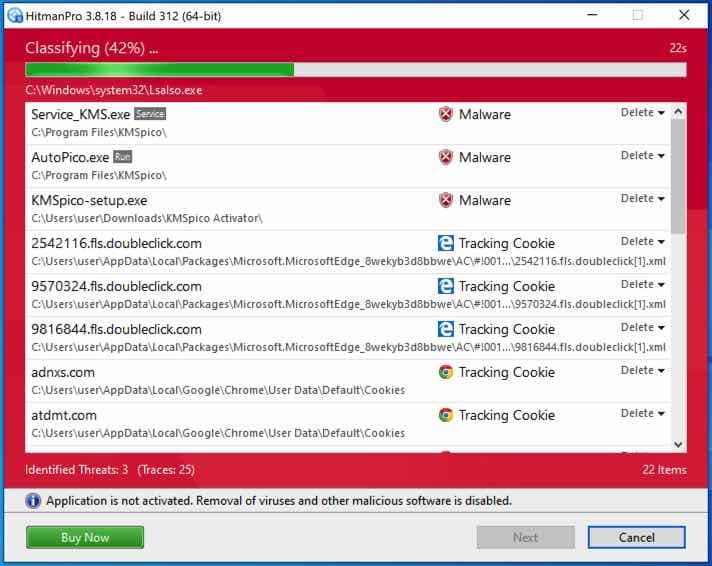
After the scan, click Next and activate the free HitmanPRO license. Click on Activate Free license.
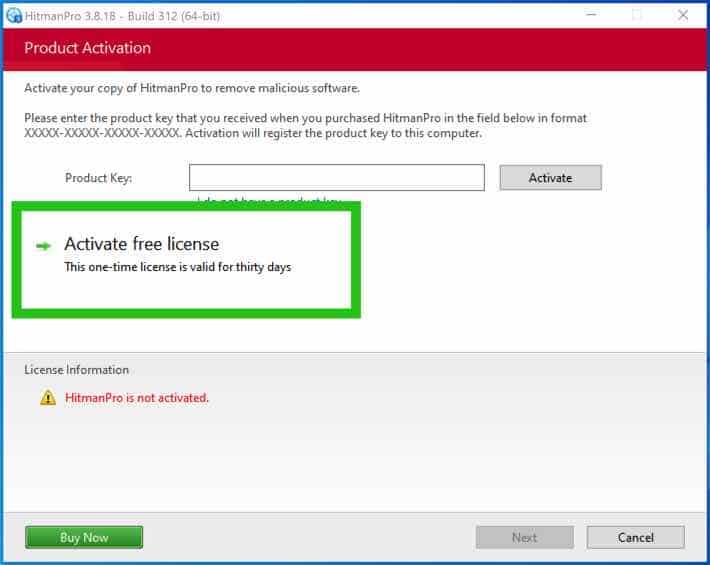
Enter your e-mail for a Sophos HitmanPRO free thirty days license. Click on Activate.
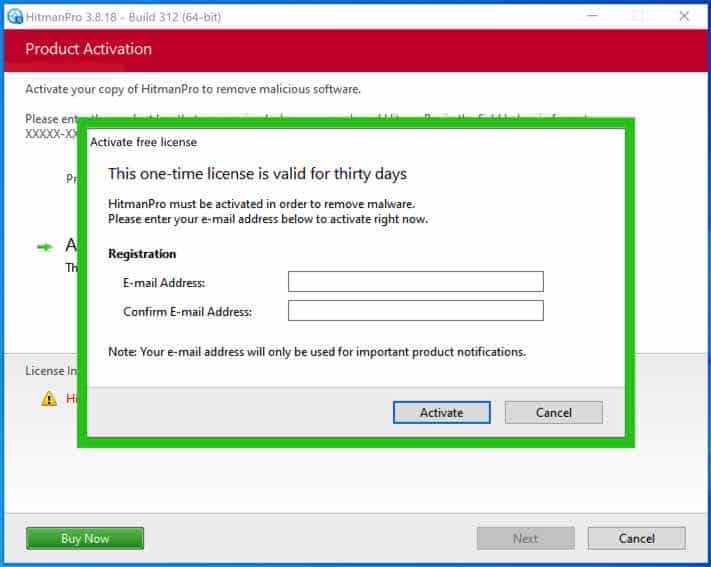
The free HitmanPRO license is successfully activated.
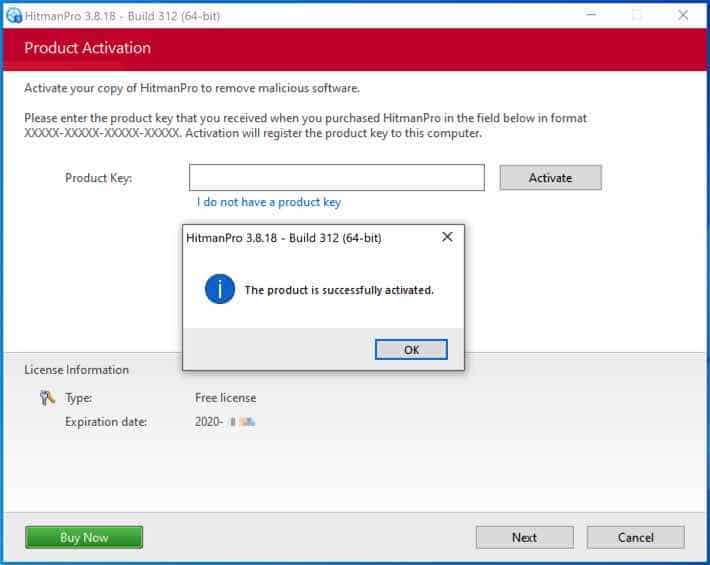
You’ll be presented with the malware removal results. Click Next to continue.

Malicious software was partially removed from your computer. Restart your computer to complete the removal.
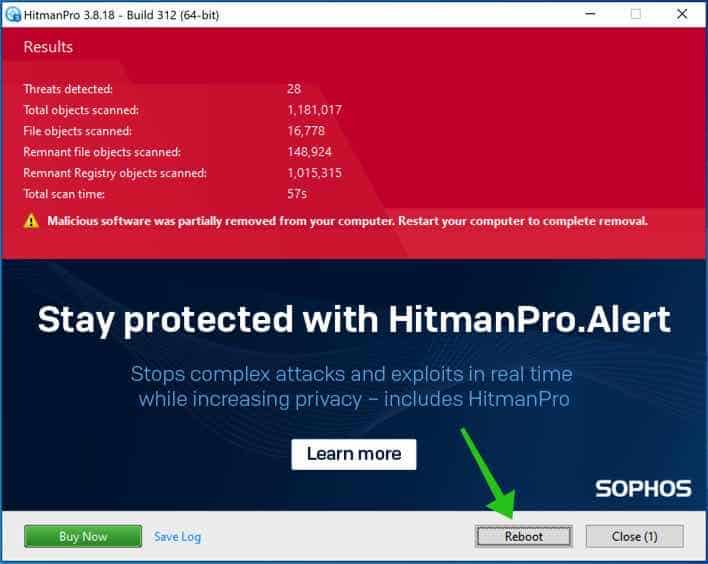
Stay safe!